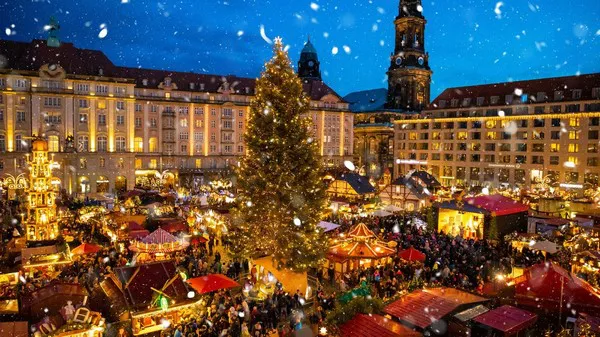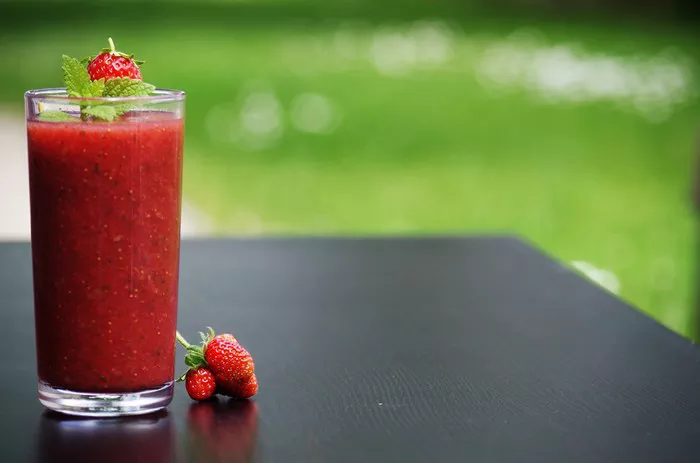As the winter season sets in and the air grows crisp, Germany transforms into a festive wonderland, adorned with sparkling lights, bustling markets, and age-old traditions. Christmas in Germany is a magical time, rich in customs that have been celebrated for centuries. From cherished festivities to unique practices, let’s delve into the captivating world of German Christmas traditions.
Advent Wreath and Calendar
The countdown to Christmas in Germany begins with Advent, which commences on the fourth Sunday before December 25th. Advent wreaths, adorned with four candles—one for each Sunday of Advent—are a common sight in German homes. Families light a candle each Sunday until all four are aglow on Christmas Eve. Additionally, Advent calendars are treasured by both children and adults. These calendars feature 24 small doors, each hiding a treat or a small gift to be opened daily from December 1st until Christmas Eve.
Christmas Markets (Weihnachtsmärkte)
One of the most beloved German Christmas traditions is the Weihnachtsmarkt, or Christmas market. These markets typically open in late November and continue until Christmas Eve, filling town squares with festive stalls selling handmade ornaments, gifts, seasonal foods, and warm beverages like Glühwein (mulled wine) and Feuerzangenbowle (a flaming, rum-spiked punch). The markets are beautifully decorated, often with towering Christmas trees, and serve as a hub for holiday cheer and community gatherings.
St. Nicholas Day (Nikolaustag)
On the evening of December 5th, German children eagerly await Nikolaustag, the feast day of St. Nicholas. Traditionally, children polish their boots and leave them outside their doors, hoping St. Nicholas will fill them with small gifts, chocolates, or fruit overnight. St. Nicholas is often portrayed wearing a bishop’s robe and accompanied by Knecht Ruprecht, who carries a rod to discipline children who have misbehaved—a nod to the cautionary tale that accompanies this festive tradition.
Christmas Tree (Weihnachtsbaum)
The Christmas tree holds a special place in German holiday traditions. It’s believed that the modern Christmas tree originated in Germany during the 16th century when devout Christians decorated evergreen trees in their homes. Today, the Christmas tree is typically put up and decorated on Christmas Eve. Families gather around to adorn the tree with lights, tinsel, glass baubles, and homemade decorations. The tree is often topped with a star or an angel, and gifts are placed beneath it to be opened after a festive dinner.
Christmas Eve (Heiligabend)
In Germany, December 24th, Heiligabend (literally “Holy Evening”), is the primary day of celebration. Families attend church services, and in the evening, they gather for a festive meal. A typical Heiligabend dinner might include roast goose, carp, or a variety of sausages, accompanied by potato salad or other traditional sides. After dinner, families exchange gifts around the Christmas tree, followed by singing Christmas carols together.
Christkind and Weihnachtsmann
The Christkind, meaning “Christ Child,” is a key figure in German Christmas lore. Often depicted as an angelic being with golden locks and wings, the Christkind is believed to bring gifts to children on Christmas Eve. In some regions, however, gifts are brought by the Weihnachtsmann (Santa Claus), similar to the American Santa Claus figure. The tradition of the Christkind dates back to the Protestant Reformation, where Martin Luther sought to shift the emphasis away from Saint Nicholas towards a more Christ-centered celebration.
Traditional Christmas Foods
German Christmas cuisine is hearty and comforting, perfect for the winter season. Stollen, a sweet bread filled with nuts, spices, and dried fruit, is a staple Christmas treat. Lebkuchen, a type of gingerbread cookie, is another favorite, often decorated with icing. Families also enjoy Plätzchen, which are a variety of Christmas cookies baked in different shapes and flavors. These treats are often shared with friends and neighbors during the holiday season.
Silent Night and Carols
Music is an integral part of German Christmas celebrations. The beloved carol “Stille Nacht” (Silent Night), composed in Austria in 1818, is sung in its original German at many Christmas Eve services across Germany. Other popular carols like “O Tannenbaum” (O Christmas Tree) and “Oh du fröhliche” (O, How Joyfully) add to the festive atmosphere, with families and communities coming together to sing these timeless tunes.
Krampusnacht
In some regions of Germany, particularly Bavaria and Austria, December 5th is marked by Krampusnacht, a celebration centered around Krampus—a devilish figure who punishes naughty children. Participants dress up as Krampus, wearing frightening masks and costumes, and roam the streets, playfully scaring onlookers. Krampusnacht is a unique and slightly eerie aspect of German Christmas folklore.
Candlelit Christmas Services
Attending candlelit Christmas services is a cherished tradition for many Germans. Churches are adorned with festive decorations, and congregations gather to sing hymns, hear Christmas readings, and reflect on the meaning of the holiday season. The atmosphere is serene and reverent, with candles casting a warm glow throughout the church.
New Year’s Eve (Silvester)
The holiday season in Germany extends beyond Christmas, culminating in Silvester, or New Year’s Eve. Germans ring in the new year with fireworks displays, parties, and feasts. It’s customary to watch “Dinner for One,” a British comedy sketch that has become a beloved German New Year’s Eve tradition. Families and friends gather to celebrate and welcome the new year with optimism and good cheer.
Conclusion
In conclusion, German Christmas traditions are a beautiful tapestry of customs that blend the festive spirit with rich cultural heritage. From the twinkling lights of Christmas markets to the heartwarming rituals of Nikolaustag and Heiligabend, the holiday season in Germany is a time of joy, togetherness, and celebration. These traditions not only bring families closer but also embody the magic and wonder of Christmas for people of all ages. So, immerse yourself in the enchanting world of German Christmas and experience the warmth and charm of these timeless customs. Frohe Weihnachten! (Merry Christmas!)
Related Topics:

























